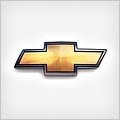
CHEVROLET Corvette Coupe
Generations Timeline, Specs and Pictures
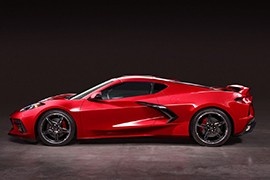
The mid-engine Corvette has finally arrived on the market! It was a promise that GM showed and never fulfilled.
But now it is finally here! Since the C4 Corvette, all the others were, basically, more or less just updates. But the leaf-spring transverse suspension was there, the look was about the same and the 5.7-liter V8 engine was only technologically updated. The LT1 engine introduction in 2014 with the 6.2-liter displacement was considered a breakthrough. But it still kept the same push-rod distribution system.
The new C8 comes with the LT2 version of the same engine and very close performance figures of 490 hp and 630 Nm (465 lb-ft) of torque. The performance package adds 5 more horses to the output due to a different exhaust. The transmission is an 8-speed dual-clutch that sends the power to the rear wheels. The good thing is that the transaxle system, with the engine in the front and the gearbox in the back, is gone. It was good, but this mid-engine is better.
The bodywork is made out of reinforced plastic materials, that help reduce the overall weight of the vehicle and improve performance. And the interior looks like it was taken from fighting machine from Star Wars. Altogether with its buttons and controls and touch-screen displays.
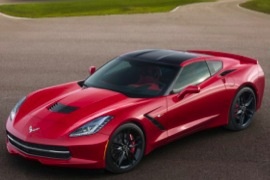
No doubt about it: the C7 Corvette Stingray was the best “old school” Corvette ever.
It was the last with front engine and, also, it was the first with a really nice interior.
Its silhouette was easy to recognize. It had the same sharp nose, a long hood, and an aerodynamic greenhouse. In the rear, the short overhang amplified the sport look. On top of that, the roof featured a carbon-fiber removable part that transformed the car from a coupe to a targa bodywork. Also, the hood was carbon-fiber too, to enhance the weight distribution.
Inside, there was a big improvement over the C6, which wasn’t that good on materials quality. The dashboard features a mix instrument cluster, with analog dials and a TFT display which could be customized to show the information needed by the driver. On the central console, there was the rotary knob for drive-mode selector with a big, round “ESP-off” button in the middle. Another important improvement was the infotainment system that featured an 8” touch-screen display. The head-up display was kept, but with better functions.
Under the hood, the C7 featured a new, 6.2-liter engine that offered 455 hp and 610 Nm (450 lb-ft) of torque. It could be mated either with a six-speed automatic transmission or a 7-speed manual. The adaptive dampers with Magnetic ride control were upgraded and, on the C7, offered more settings than on the C6. It was the last front-engine, rear-wheel drive Corvette.
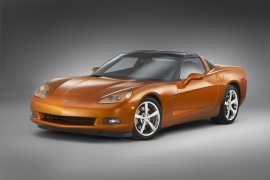
Even after five decades since the model introduction in Chevrolet’s lineup, the Corvette was still one of the best-known American sports cars, if not the most famous one.
In 2004 the bow-tie brand introduced the Corvette C6 Coupe and, just four years later, it came with an updated package. The long and slim silhouette of the Corvette was always fascinating for car enthusiasts all over the world. It also was one of the quickest and fastest cars for the buck spent. Its lines and the exposed headlights were a big step forward for its design. At a glance, it didn’t look so much different than the C2 Vette (apart from the pop-up headlights). The slim vents behind the front wheels and the four exhausts completed the car’s sporty image. Its long, sloped and curved rear window was also unique on the market.
The interior was fit for two passengers, with enough legroom and a low seating position. A new, three-spoke steering wheel with buttons on the right one enhanced the driver’s experience. On the center stack, Chevrolet offered a 6.5” touch-screen display for the infotainment unit. As an option, the carmaker offered a Bose sound system.
A significant upgrade was under the hood, where the carmaker introduced its new LS3 V-8 engine, with a larger displacement than the LS2, which it replaced. The 6.2-liter powerplant provided 430 hp instead of 405 hp available on the 2004 model. It sent the power to the rear wheels via a six-speed manual transmission, while a 6-speed automatic was on the options list.

The Corvette was the best-known American sports car, and the 2004 model came on the market to confirm that Chevrolet did an excellent job again.
Introduced in the fall of 2004, the C6 Corvette was well received by its fans. It featured new technologies and upgraded systems that made the car a tougher competitor for the best European sports cars.
Even if the C6 was not 100% new, a significant difference was on the headlights. The front headlights deleted the traditional “pop-up” headlights, for the first time since 1963, since the second generation was launched. Like its predecessors, it featured fiberglass bodywork. The raked windshield and short roof formed a low-profile greenhouse, while in the back, a vast curved windscreen resembled the shape of the Corvette “split-window.” From its sides, the gaps behind the doors served as door handles. Viewed from behind a four-exhaust system grouped toward the car’s center and the four round taillights completed the car’s sporty image.
The interior was covered in plastic and leather of higher quality compared to the previous C5 Corvette. An infotainment system with a 6.5” touchscreen was placed on the center console, tilted toward the driver. A head-up display showed the driver information about speed, revs, and lateral acceleration.
Under the hood, there was a new LS2 engine that featured a 6.0-liter displacement and offered 400 hp. It was mated either with a 6-speed manual or a 4-speed automatic. In 2008, Chevrolet added the Z06 engine option with a 7.0-liter V-8 engine (LS7). The suspension still had leaf springs but featured magneto-rheological dampers able to detect road surfaces and adjust the damping rates to those surfaces for better ride control.

The Z06 was designed as a high performance sports version of the Chevrolet Corvette C5 and was introduced by the North American marque in 2001.
Continuing the tradition of the Chevrolet Corvette C2 Z06, this new model was built to match the characteristics of its powerful 5.7-liter LS6 V8 engine. That included a rigid body style, an upgraded suspension, larger wheels, revised braking system and a lighter hardtop. While rated by Chevrolet at only 405 hp, the LS6 actually produced a massive 425 hp at most dynamometer tests. In terms of 0-60 mph performances, the Z06 was at least in the same class with BMW Z8, Ferrari 360 or Porsche 911 Turbo (Type 996).
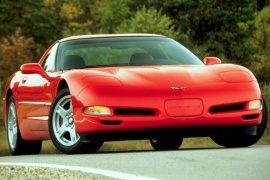
It was the last Corvette with pop-up headlights and it brought the 50-50 weight distribution to the range.
The C5 generation was a big improvement for the well-known American sports-car.
The Corvette, along with the Mustang, was the only American sports-car continuously produced since its first generation, but it appeared a decade before the “Stang” showed to the party. It was constantly improved and survived all the oil crises of the XX-th century.
Sleek, low, and with a stance that couldn’t be mistaken with any other sports-car on the market, the Corvette kept its promise to offer exhilarating performance at a bargain price. There was no other car on the market to sprint as fast as it, and have the same price. The long hood featured two wide bulges on it to evoke the V8 under the hood. The fastback look with a long rear windscreen and the short trunk were some of its characteristics.
Inside, the Corvette didn’t offer the same high-quality materials or fittings. But the low seating position and the high center console were typical for a sports-car.
The drivetrain was transaxle with the engine in the front and the gearbox in the back. Unlike its predecessors, the differential was integrated into the gearbox instead and not as a separate unit as before. The LS1, small-block 5.7-liter V8 was upgraded, but it still featured a push-rod configuration, which was considered outdated for most of the European cars. It offered only 345 hp, but due to its high torque at low revs and the light, plastic, bodywork, it could outrun most of the cars on the market. It was offered with either a 6-speed manual or a 4-speed automatic.

The C4 Corvette was introduced at the close in 1982 and ended in 1996.
The C4 Corvette is known for it’s sleek look, massive V8 engines that produce enough to pull you’re skin back. Instead of fiberglass the Corvette was made from reaction injected molding plastics. The C4 Coupe is the first model of Corvette that came with a glass hatchback, it also had new brakes with aluminum calipers and an electronic dashboard with digital liquid crystal displays for speed and RPM. The C4 was completely redesigned putting the accent on handling, but it came with a cost, the C4 had a solid uncompromising ride.
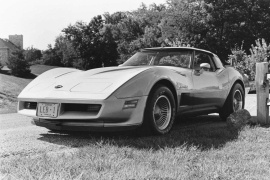
The C3 had the most extended lifespan in Corvette’s history, and people considered it one of the most beautiful from the series.
With a design inspired by the Mako II concept car designed by Larry Shinoda under the supervision of Bill Mitchell, the C3 broke the rules of an American sports car. It was launched at the beginning of the muscle-car era, but its look was like nothing else on the market. But Mitchell and GM knew that an open-top version was required, and the quickest solution was a T-top. It was the closest thing to a convertible, which was introduced later on and sold in smaller numbers than expected.
The T-top featured a wide V-shaped front bumper made out of urethane, while most cars still featured chromed metallic ones. Its pop-up headlights protected the four headlamps and improved the car’s aerodynamic. Its long hood stood lower than the front fenders upper side, while the sideline was a double curved shape, lowered on the doors and raised again over the rear wheel-arches. At the back, the sloped trunk lid sported an integrated lip spoiler. The T-Top featured a beam that connected the windshield with the safety arch above the seats. Its removable panels were small enough to fit behind the seats.
Inside, the carmaker installed low-mounted sport bucket seats separated by a tall center console where Chevrolet placed the hand-brake. Since it was more of a luxury car than a sports coupe, it featured a center stack where GM arranged the audio controls and the ventilation dials. The dashboard was sloped toward the car’s occupants.
Under the hood, Chevrolet installed a 5.7-liter, small-block V-8 engine paired to a three-speed automatic transmission. The big-block version was reserved for its coupe sibling.
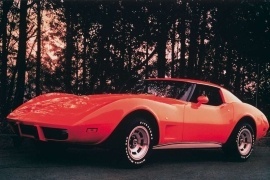
The year 1968 meant the birth of the third generation of Corvettes that were to last for the upcoming 15 years.
The design featured hidden windshield wipers and headlights and removable T-tops. One of the biggest problems of the Corvettes was the engine cooling system. The production version cooling was still barely sufficient for the big-block engines with air conditioning. As standard for the C3 was a 327 cubic-inch engine that produced up to 300 horsepower. Also an option was the aluminum head 427 cubic-inch power plant that produced a massive 430 horsepower.
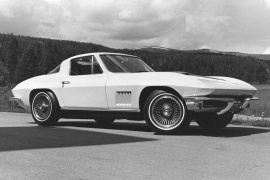
With the second Corvette generation, GM finally hit the spot on the sports car market, improving the vehicle in any way so it could match the performance of any of its European competitors.
Chevrolet introduced the pop-up headlights and the narrow front end of the Corvette, but that was just the tip of the iceberg. Underneath the fiberglass bodywork, it improved the brakes by adding front discs and the suspension by introducing an independent system. For the keen drivers that wanted to take their cars to the track, it even provided a positronic differential.
The streamlined car’s look featured a slight bump at the front, continued by an almost flat hood. Its aerodynamically profiled front fenders channeled the air so it could run with fewer turbulences. Thanks to a curved windshield and a long, boat-tail-shaped rear side of the greenhouse, the Stingray was a work of beauty. The enlarged rear fenders, with taller shoulders, created a muscular look, and it wasn’t for nothing since the car could do a quarter-mile in less than 15 seconds. For a car built in 1963, that was remarkable. At the back, the twin round taillights were unique for the Corvette.
Inside, the carmaker made the Corvette with two seats at the front and a bench in the rear, but with room just for two. Maybe, for some very short distances, someone could sit diagonally in the back. The trunk space was accessible only from the inside since there was no tailgate. A three-spoke steering wheel with a free space between nine and three o’clock allowed fast drivers to use the car properly on a track.
The Stingray featured a 5.4-liter V-8 paired with a four-speed manual. In addition, GM offered power-steering as an option.

After three years since the first Corvette hit the market, GM struggled to find customers for its sports car and tried to make it more appealing.
Chevrolet looked like a chef who knew the ingredients but couldn’t find the right recipe to make the C1 good enough for its customers. But its competitors didn’t make things easier for the bow-tie brand. Ford, Studebaker, Jaguar, Austin-Halley and AMC aimed at the same market segment. In 1956, Chevrolet decided to push harder on the market with a slightly revised version.
First of all, the management understood that the fin-tails were not meant to be installed on a sports car and deleted them. Thus, the C1 received a rounded rear end, closer to the British roadsters styling. Also, they noticed that the headlights and the front fenders didn’t look that impressive and that’s how the side-vents appeared on the 1956 Corvette, along with the classic round headlights in chromed rings. The customers didn’t complain about the grille, though, so GM didn’t change it.
In the summer of ‘56, GM introduced the car to selected dealers and soon received a few negative feedbacks from its customers. There was not enough interior room, especially for six-footers (1.82m). With the top up, they barely had any headroom left. On the plus side, everyone praised the electrically-operated rag-top that could open and closed in a matter of seconds without leaving the vehicle.
Under the hood, there was still a debate either if they should go with the newly developed fuel-injection system or stick to the good old carburetor. The odds decided to go with the latter solution while the former was on the options list. Another good point for the Corvette was the PowerGlide automatic gearbox offered as an option for the four-speed manual transmission.























































